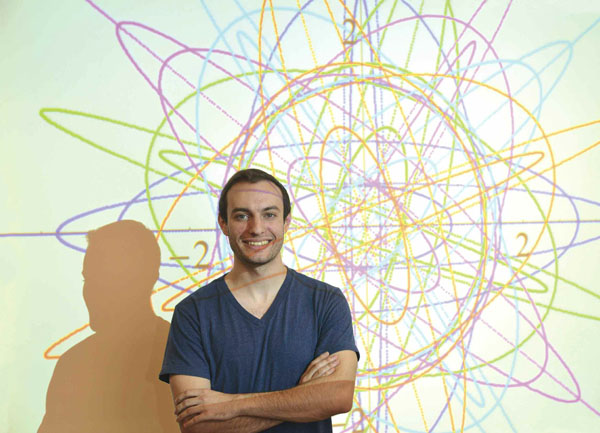
Drawing on the power of today’s computers, Bob Lutz ’13 in his senior year discovered new ways to present, in stunning graphics, mathematical expressions studied by math great C.F. Gauss two centuries ago. Presenting long-studied exponential sums in an entirely new visual form, Lutz was able to graph patterns nobody has seen before. Here is Lutz’s path to a remarkable undergraduate achievement:
1) TRANSFER in from Vassar set on studying math. Finish your prerequisites. Declare your major. Get a warm welcome from the Math Department—and a nudge to consider doing research. Find opportunities “all over the place.” Work with Professor Adolfo Rumbos for the summer.
2) ATTEND a math lunch in the fall. Meet Professor Stephan Garcia, who suggests your interest in functional analysis would mesh with his research. Get to work. Co-author a research paper that is accepted for publication in the Proceedings of the American Mathematical Society.
3) JOIN another round of research with Professor Garcia involving exponential sums first studied by Gauss. Run with the professor’s suggestion that you come up with some code to graph them. Push the plots and discover they yield curvy triangles, vortices and other fascinating visual patterns on the computer screen.
4) REALIZE you have found your senior thesis—and maybe more. Work on the project for six months. Face rejection trying to get a paper published. Step back. Wait. Score your break after Professor Garcia includes your work as part of a talk he gives at UCLA attended by mathematician Bill Duke, who did related work years before. Get help from Duke in proving some of your conjectures.
5) EARN Pomona’s annual award for outstanding senior in mathematics. Feel awe after Professor Garcia submits the paper on the graphing work to an editor on a Friday—and gets a “yes” the next morning. Spend the summer working with Garcia putting the finishing touches on this second paper for the Proceedings of the AMS. Set off for graduate studies in math at your first-choice school, the University of Michigan, Ann Arbor.
